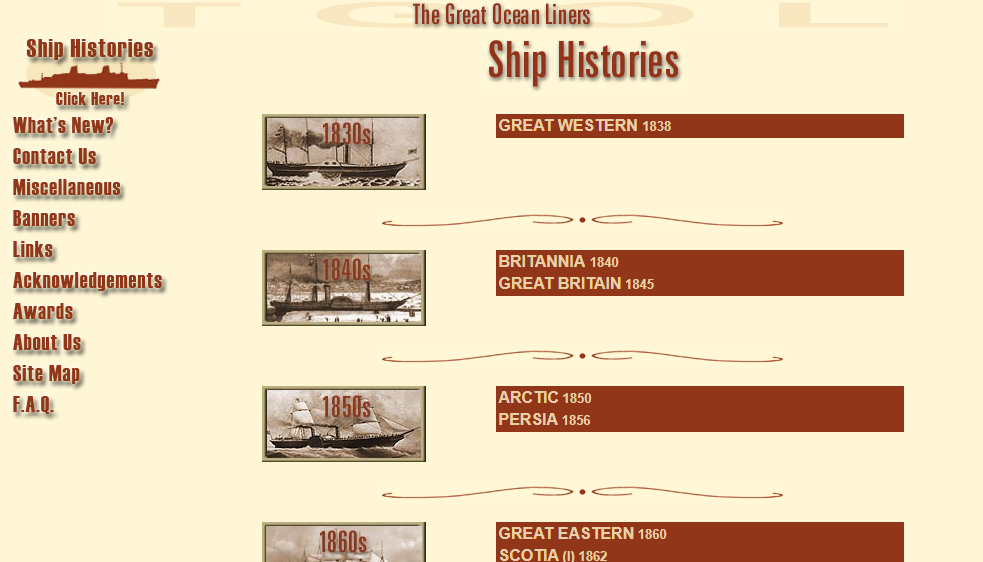
Welcome to The Great Ocean Liners! This website was originally launched in 1999, and underwent a visual overhaul in 2001. Since then, it remained more or less static as a testament of all the hard work and research that we had put into it. Now, finally, we have modernised the entire website, hopefully providing an experience more in line with how the internet is accessed in the 21st century, via mobile as well as desktop devices.
Perhaps the most requested feature is the site’s search function, which will hopefully make it much easier for our readers to find the information they are looking for. In the visual department, our articles now come with more images, which can all be enlarged by a simple click. Some parts of the website have been removed, such as the antiquated guestbook and the visitor counter. Now, our articles instead offer our readers the ability to post comments, which will hopefully spark some interesting discussions. In addition, we try to maintain a presence through our Facebook page, which Daniel launched a few years ago.
We hope you will enjoy your visit at the third incarnation of The Great Ocean Liners!
Introduction
In the words of maritime historian John Maxtone-Graham, the ocean liners were once ‘the only way to cross’. In the age before the jet aeroplane, the world had since the mid-19th century witnessed an explosion in shipbuilding technology. One of the main reasons to this was, of course, the steam engine. Although sceptical and reluctant to change their age-old profession in the beginning, sailors soon began to favour the steam engine instead of sails. The first steamship to cross the North Atlantic was the paddle steamer Savannah. In 1819, she made the trip from the Savannah River to Liverpool in 27 days. Although her steam engine was used for only 85 hours during the whole voyage, this marked the beginning of a new era.
At first, these revolutionary vessels’ main task was to carry mail between the continents. But passengers, up until then referring to sailing vessels as ‘coffin ships’ because they seldom meant a safe crossing, soon discovered the improved safety and reliability of the new steam ships. Therefore, a group that so far had been a side income for the shipping lines soon became the most important aspect of the trade – the passenger.
For the rest of the century, ships developed at a rapid pace. Soon, sails disappeared all together, and the paddle wheels were replaced by the far more efficient propeller. With the amount of immigrants to America increasing, the market called for bigger and faster ships. Ironically, the once so dominant sailing vessels were now used to ship and store coal for the new rulers of the sea.
By the end of the 19th century and the beginning of the 20th, the ocean liner had definitely established its place in the world. Now, they were not only means of transportation, but also great national symbols. With nationalism blooming in every corner of Europe, each nation wanted to boast having the largest and fastest ships. Such competition gave birth to many great vessels, but sadly the circumstances leading to their creation would soon result in the destruction of many. World War I saw the end of both the Britannic and the Lusitania, to mention just two of many losses.
After the war, the fleet of the Allies was rebuilt with German warprizes, and the transatlantic trade experienced yet another boom in the 1920s. Although the depression struck the shipping lines and shipbuilders hard, the 1930s was the decade in which ships like the Normandie and the two Queens came to life. And other fantastic ships were to be built in the decades to come.
